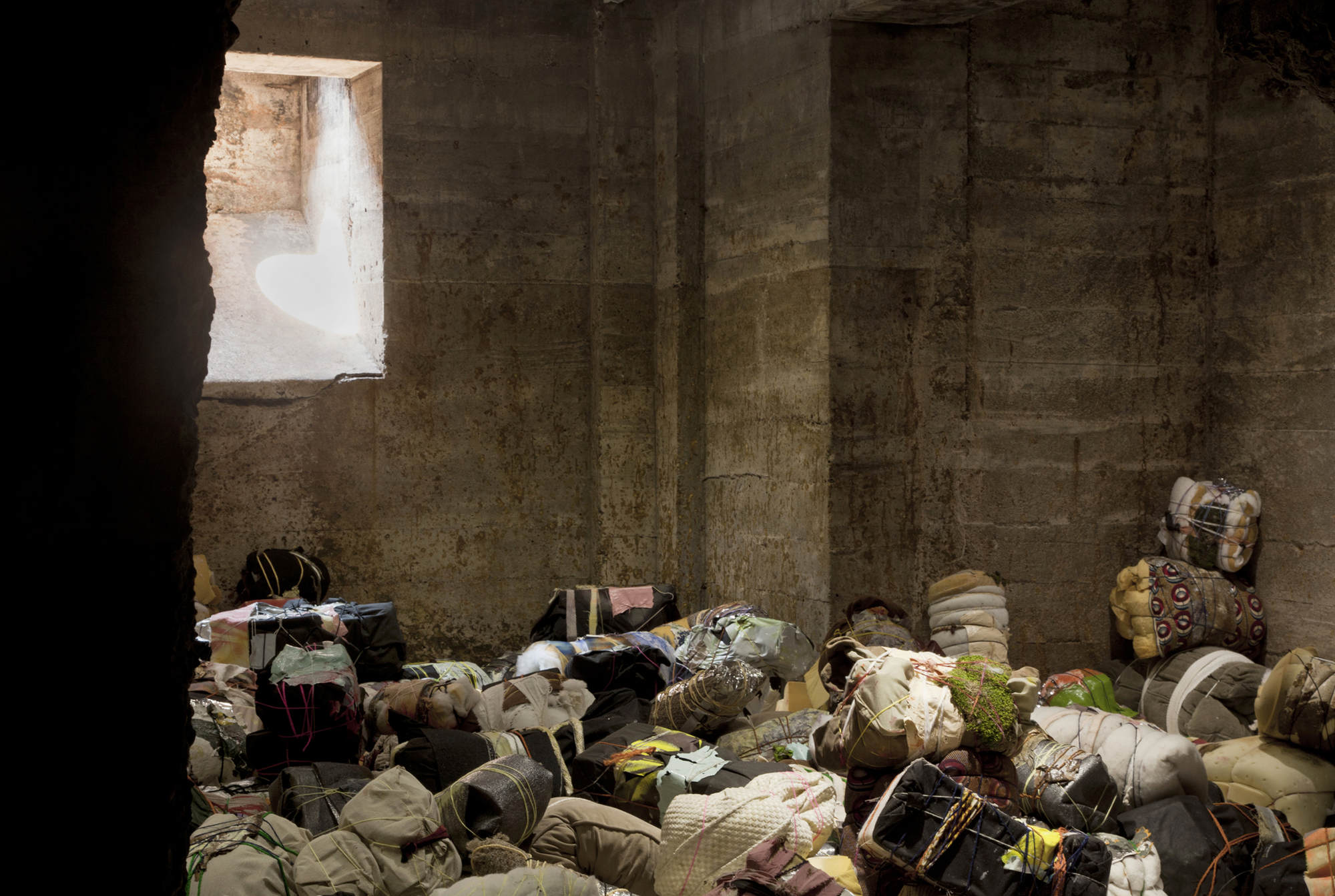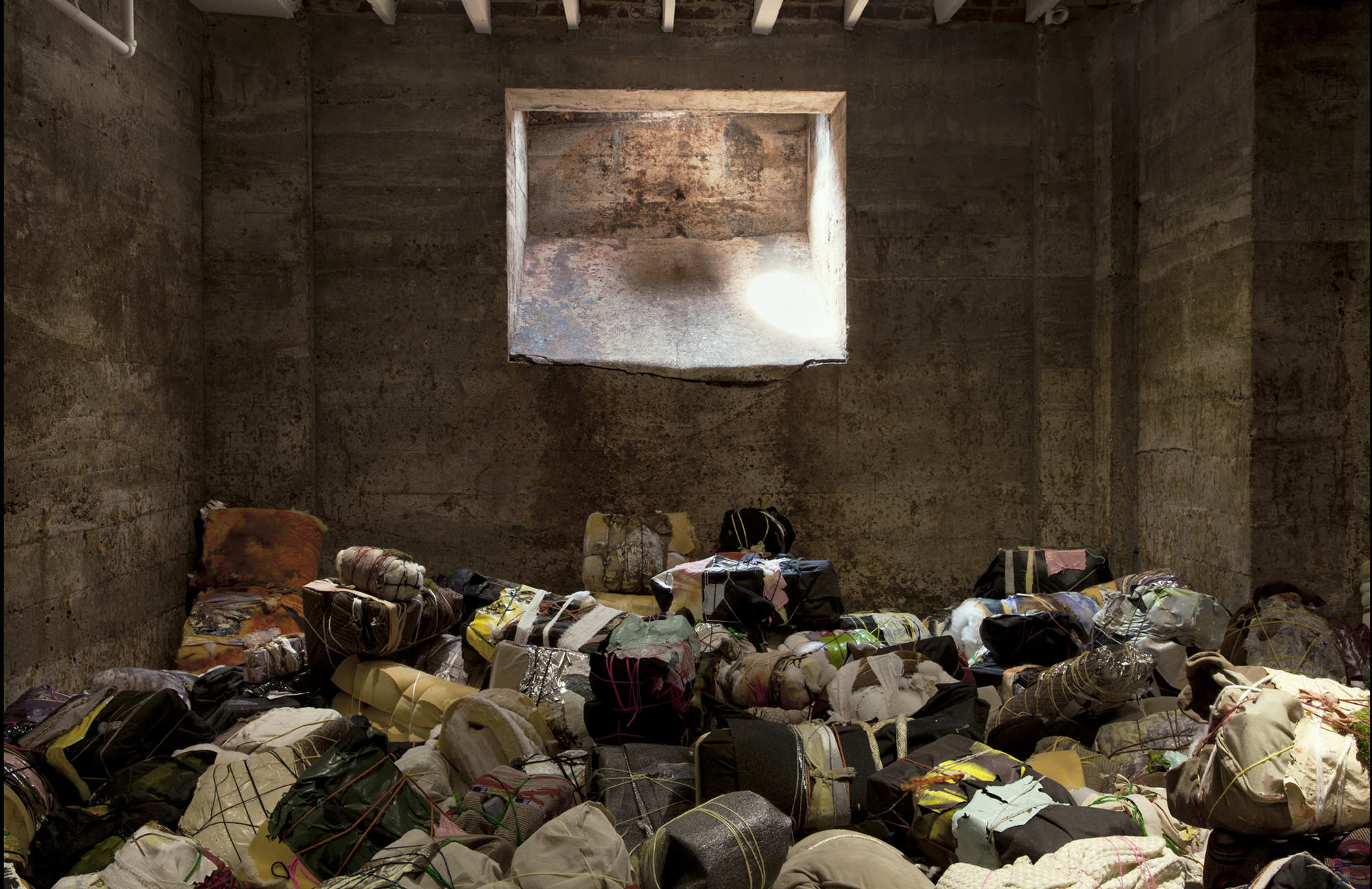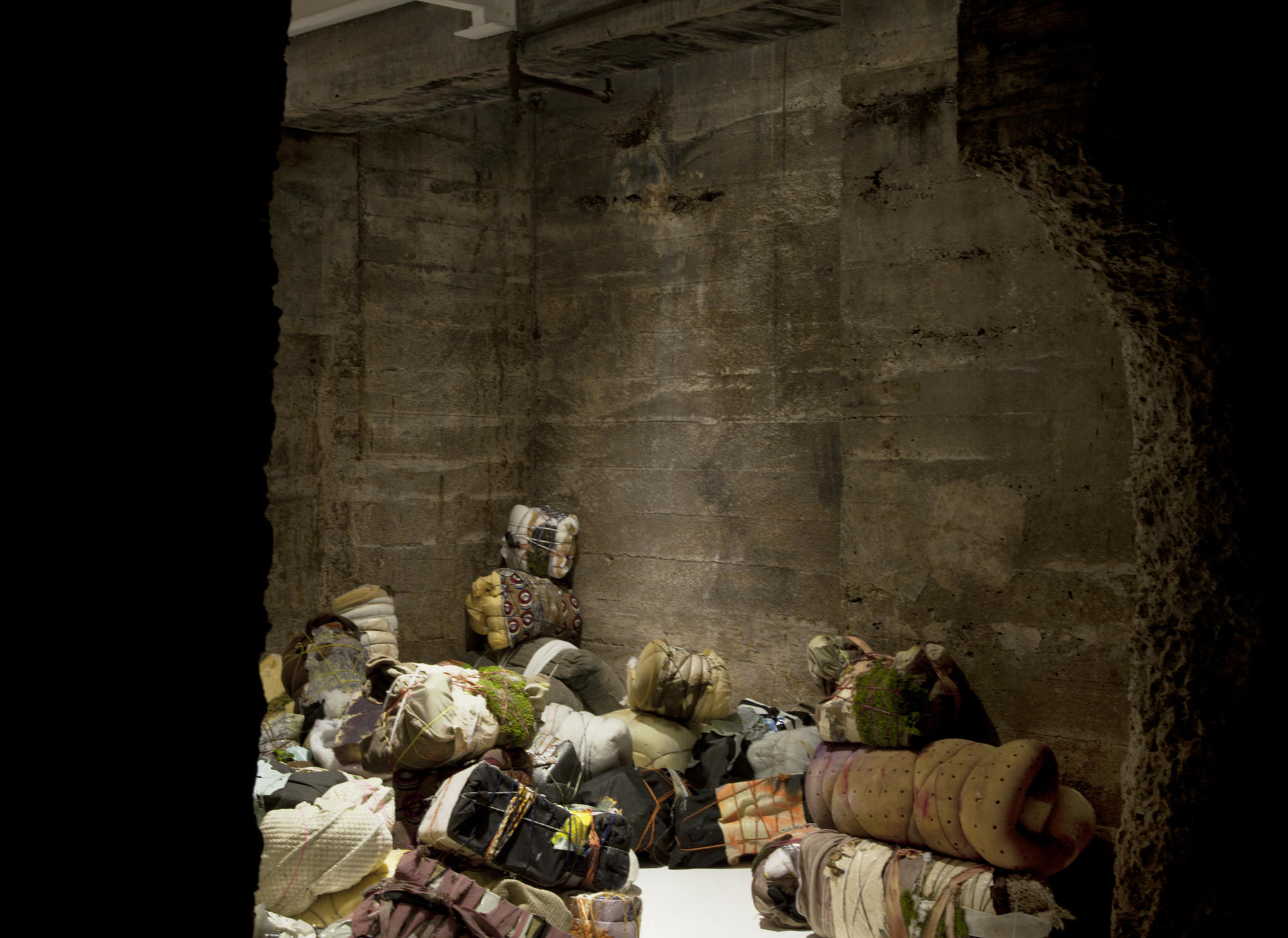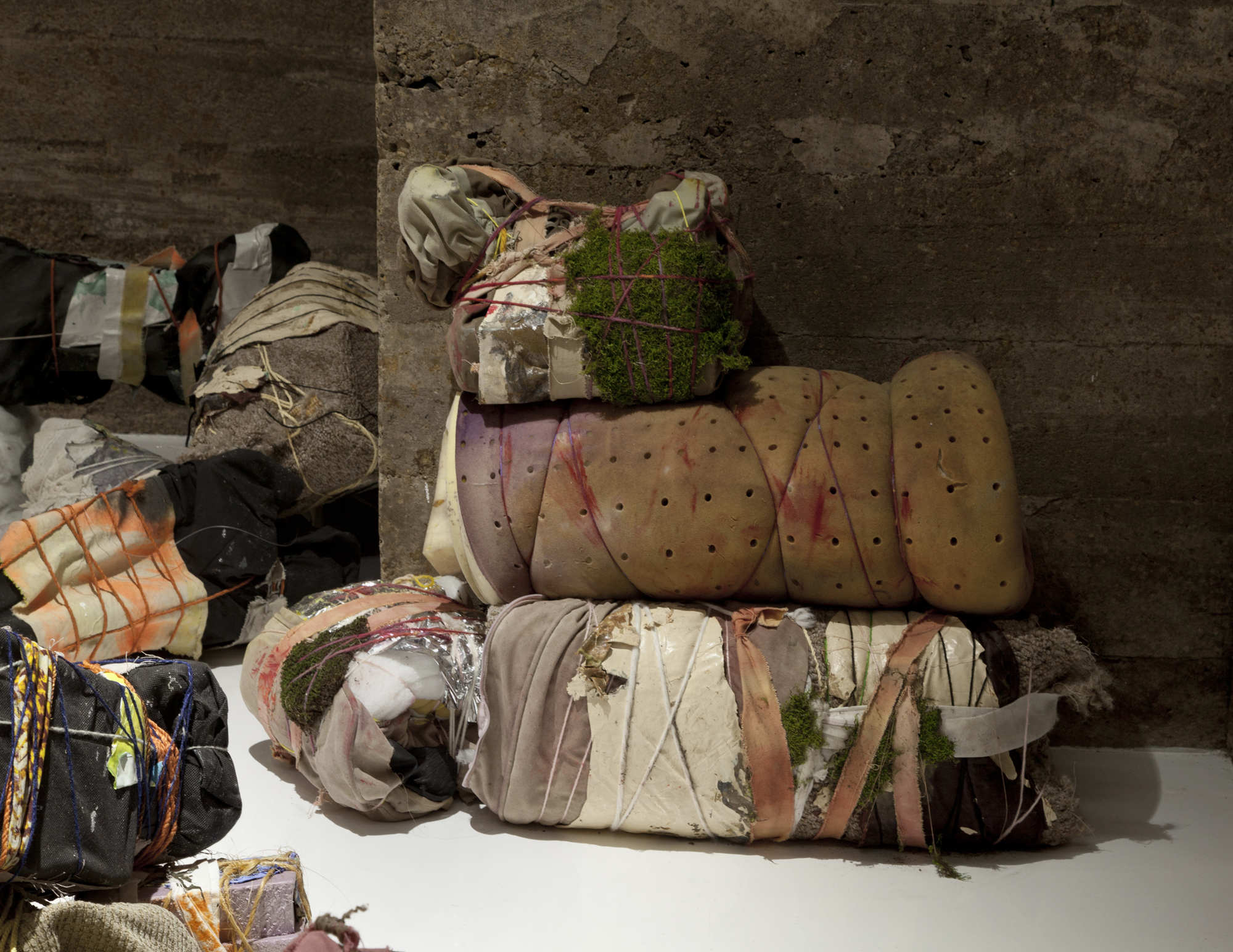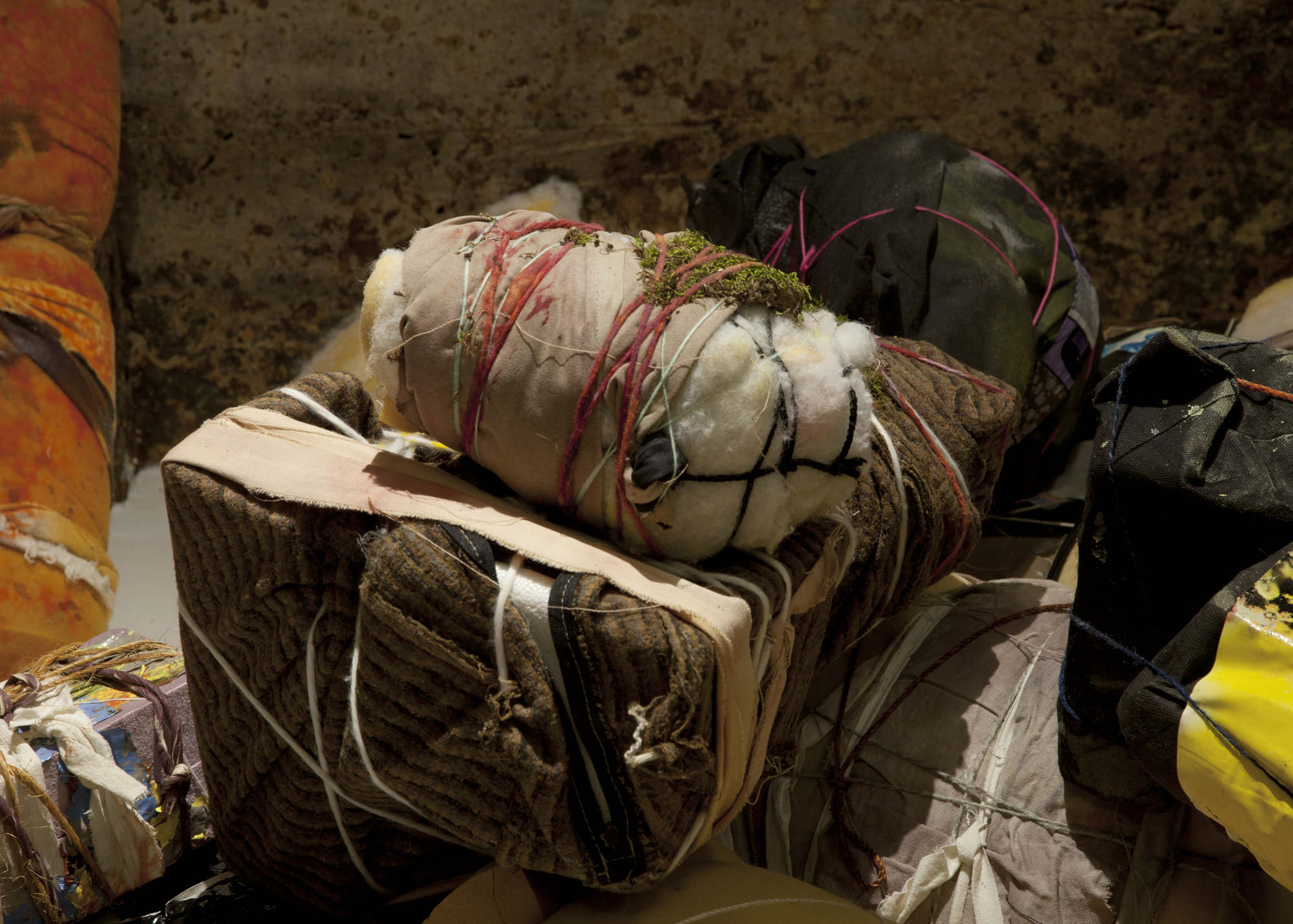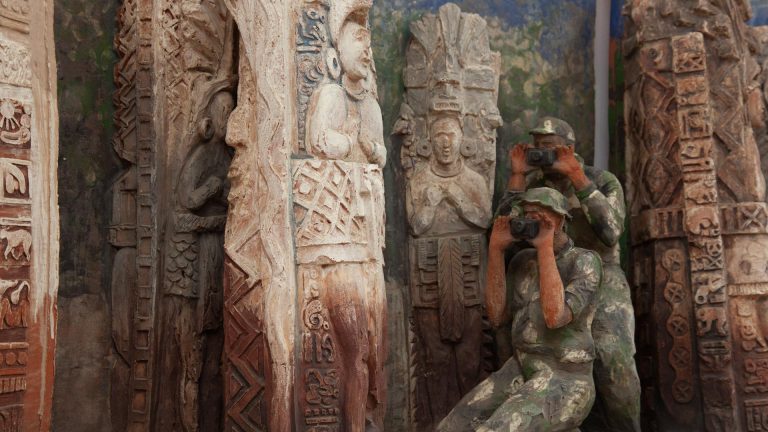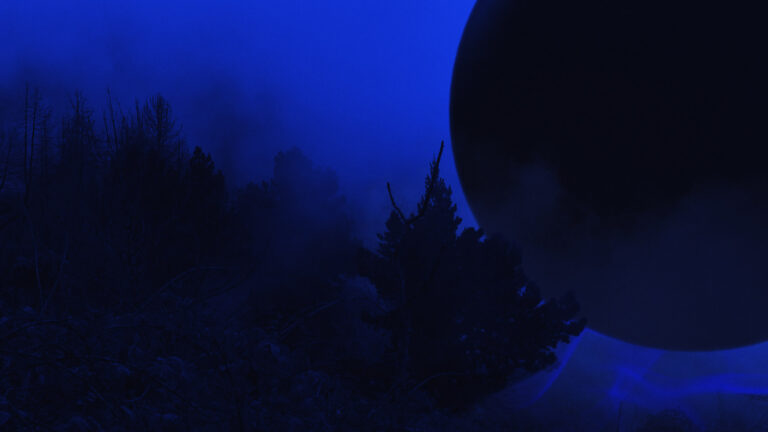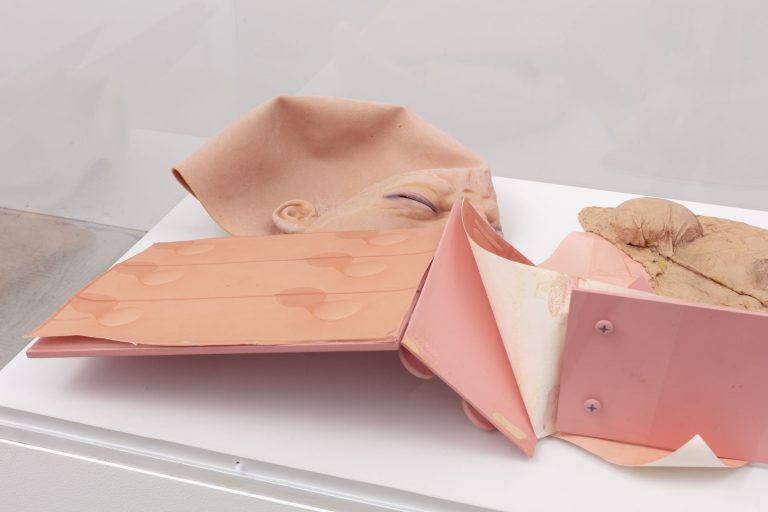Artist: Gil Ngolé
Exhibition title: The Season Moved
Venue: Tops Gallery, Memphis, US
Date: August 21 – October 3, 2015
Photography: images copyright and courtesy of the artist and Tops Gallery, Memphis
Tops Gallery is pleased to present Gil Ngolé’s exhibition, The Season Moved, opening on August 21st, 2015.
Filling the gallery are over two hundred bundles composed of discarded objects that the artist has found on nocturnal walks around Memphis. These sculptures will be accompanied by a large painting and an immersive sound piece. Raised in the Republic of Congo, Ngolé created work recalling both folk traditions and the upheavels of the post-colonial period. The exhibitions title refers to the vast displacement of people that the artist witnessed during the Second Republic of the Congo Civil War in 1997.
Through a multivalent practice, Ngolé responds to, the transit of bodies and objects within contemporary culture. The bundles are constructed using the logic of the refugee. Moving through his adopted city, Ngolé gathers his materials: discarded objects, as well as bits of fabric and foam. He then creates quick assemblages, often incorporating a swath of highly- patterned Congolese fabric, in just a minute’s time. Constructed with no aesthetic concerns save for necessity, the bundles contain the trauma of displacement, as well as a veiled critique of the disposability inherent to global capitalism-both of objects and people. In this way, Ngolé formally and thematically engages artists like John Chamberlain, whom he holds in regard, the déclassé materialism of Arte Povera, and the legacy of the found object. Dirty and frayed, they seem to have travelled a long distance without rest or recuperation, yet not without hope.
Similarly, the painting on display refers to the provisional architecture of the refugee camp. Made of shabby fabrics loosely stretched within a frame of unadorned 2x4s, the object could, if needed, be turned horizontally and used to provide shelter. The primacy of use value over aesthetic considerations is seen in the peel of acrylic paint, affixed almost as an afterthought.
Finally, Ngolé will use the architecture of the gallery as an antenna for his pirate radio station, filling the exhibition space with two sound compositions. These pieces speak to the contradictory roles radio plays in the life of the refugee-it is often the only form of escapism, but since it is frequently used by political rivals to spread propaganda and vitriol, it is also a constant reminder of the cause for displacement.



